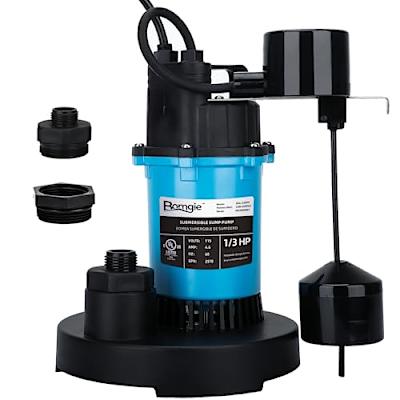Highly-Rated Techniques for Servicing a Sump Pump
Highly-Rated Techniques for Servicing a Sump Pump
Blog Article
The writer is making several great points on How To Effectively Clean A Sump Pump in general in the content followed below.

Sump pumps are essential elements in numerous homes, especially in areas susceptible to flooding or too much dampness. They assist protect against water damages by efficiently removing excess water from cellars or crawl spaces. However, like any other appliance, sump pumps require regular upkeep to ensure they function efficiently when needed one of the most. Cleaning your sump pump is a vital part of its upkeep, and understanding just how to do it effectively can save you from pricey fixings and prospective catastrophes.
Intro
Preserving a clean sump pump is vital for its proper performance and long life. Disregarding this important job can result in clogs, malfunctions, and eventually, water damages to your building. Therefore, discovering exactly how to clean a sump pump is critical for homeowners that count on these gadgets to keep their cellars completely dry and protected.
Understanding the Sump Pump
Prior to diving into the cleaning procedure, it's vital to have a fundamental understanding of how a sump pump works. Usually installed in a pit or basin below the cellar flooring, a sump pump consists of a number of essential components, including a pump, a float button, and a discharge pipeline. When water accumulates in the pit, the float switch activates the pump, which after that pumps the water out via the discharge pipe, far from the structure's structure.
Indicators of a Dirty Sump Pump
Knowing when your sump pump needs cleansing is vital for avoiding prospective malfunctions. Some common signs that show an unclean sump pump consist of odd noises throughout operation, reduced water circulation, and visible particles in the pit. If you observe any of these signs and symptoms, it's essential to cleanse your sump pump quickly to prevent any type of additional problems.
Getting ready for Cleansing
Prior to you start cleansing your sump pump, it's important to take some security precautions. Begin by shutting down the power to the pump to avoid any electrical crashes. In addition, wear proper protective gear, such as gloves and safety glasses, to protect on your own from dust, debris, and prospective pathogens.
Detailed Overview to Cleaning a Sump Pump
Shutting down the Power
Begin by disconnecting the power supply to the sump pump to stop any type of accidents while cleansing.
Eliminating Particles and Dirt
Use a container or an inside story to eliminate any noticeable debris, dust, or debris from the sump pit. Dispose of the debris properly to avoid it from blocking the pump or the discharge pipe.
Cleaning up the Pump and Drift Switch
When the pit is free from particles, meticulously remove the pump from the pit. Examine the pump and the float switch for any type of indications of damage or wear. Utilize a soft brush or fabric to clean up the surfaces and eliminate any type of gathered gunk.
Flushing the System
After cleaning the pump and float button, purge the sump pit with tidy water to eliminate any kind of continuing to be dirt or sediment. This will aid ensure that the pump runs smoothly and effectively.
Looking For Appropriate Performance
Before re-installing the pump, do a quick test to make sure that the float switch turns on the pump correctly. Put some water right into the sump pit and observe the pump's procedure. If everything is functioning correctly, you can reassemble the pump and reconnect the power supply.
Maintenance Tips to Maintain Your Sump Pump Clean
Along with periodic cleansing, there are several maintenance ideas you can comply with to keep your sump pump in optimal problem:
Final thought
Cleansing your sump pump is a critical aspect of its maintenance and makes certain that it operates successfully when you require it one of the most. By adhering to the actions outlined in this guide and incorporating regular upkeep right into your routine, you can prolong the life expectancy of your sump pump and shield your home from water damages.
6 STEPS ON HOW TO CLEAN A SUMP PUMP PROPERLY
UNDERSTANDING SUMP PUMPS
Your sump pump plays a crucial role in protecting your home by managing and removing excess water. It primarily functions as a “shield”, guarding your basement against the damaging effects of water accumulation. The pump is housed in a sump pit in the lowest part of your basement, and its job is to pump out any water that collects there.
During heavy rainfalls or when snow melts rapidly, water can infiltrate your basement, posing potential risks like flooding, structural damage, and harmful mold growth. Here, the sump pump springs into action, pumping out the intruding water and directing it away from your home.
SAFETY FIRST
Before cleaning, remember to prioritize safety. Disconnect the sump pump from the power source to prevent any accidental electric shocks. Also, wear sturdy gloves to protect your hands from any sharp or dirty components within the pump.
REMOVE THE SUMP PUMP
After ensuring your safety, the next step is to remove the sump pump from its pit. Doing this might require careful maneuvering as you don’t want to damage any pump components. Once removed, clean the sump pit to remove any accumulated debris or sludge.
INSPECT THE PUMP
Inspect the pump for any visible signs of wear or damage. Check the power cord, float switch, and impeller housing. If any components look worn out or damaged, consider replacing them to ensure optimal performance.
CLEAN THE PUMP
Thoroughly clean the pump with warm, soapy water. Make sure to rid it of any dirt, gravel, or other debris that might impede its performance. You can use a toothbrush to clean the small, hard-to-reach parts of the pump.
REINSTALL THE SUMP PUMP
Reinstall the pump into the sump pit Make sure it’s positioned correctly to remove the water effectively Once it’s back in place, reconnect it to the power source TEST THE PUMP
Finally, pour some water into the pit to ensure the pump works correctly. It should start automatically and begin pumping out the water; if it doesn’t, check the power source and the positioning of the pump.
Remember, while cleaning your sump pump is an essential part of home maintenance, hiring a professional plumber for a thorough inspection and cleaning at least once a year is also important. This will ensure that your pump is in optimal condition, ready to protect your home from potential water damage.
BEST PRACTICES FOR CLEANING SUMP PUMP DISCHARGE PIPES
Regular Inspection: Regularly inspect your discharge pipes, especially during heavy rainfall or snowmelt periods. Look for any signs of blockage or damage. Early detection of problems can prevent serious issues down the line. Periodic Cleaning: Over time, sediment and debris can accumulate in the discharge pipes, impeding the flow of water. Regular cleaning helps keep the pipes clear and functioning efficiently. You can use a high-pressure water jet to effectively clean the pipes. Insulation During Winter: In colder climates, discharge pipes can freeze, blocking the outflow of water. Protect your discharge pipes from freezing temperatures by insulating them with foam pipe insulation. This will ensure the sump pump can continue to discharge water even in freezing conditions. Proper Positioning: The discharge pipe should be positioned to direct water away from your home’s foundation. Improper positioning can lead to water seeping back into the basement. Ensure the pipe is long enough and angled correctly. Installation of a Check Valve: A check valve prevents water from flowing back into your sump pit after the pump has pushed it out. Installing a check valve helps maintain the efficiency of your sump pump and reduces the risk of flooding. Minimize Pipe Turns: Every curve or turn in the discharge pipe can decrease the efficiency of water flow. By minimizing turns and bends in your discharge pipe, you can increase the efficiency of your sump pump. https://www.fullspeedplumbing.com/how-to-clean-a-sump-pump-properly9999/

I ran across that review on Keep Your Sump Pump Clean, It'll Keep You Dry while perusing the search engines. Don't hesitate to set aside a second to distribute this write-up if you enjoyed reading it. I recognize the value of reading our article about Cleaning & Maintenance Tips for Your Home's Sump Pump.
Call Today Report this page